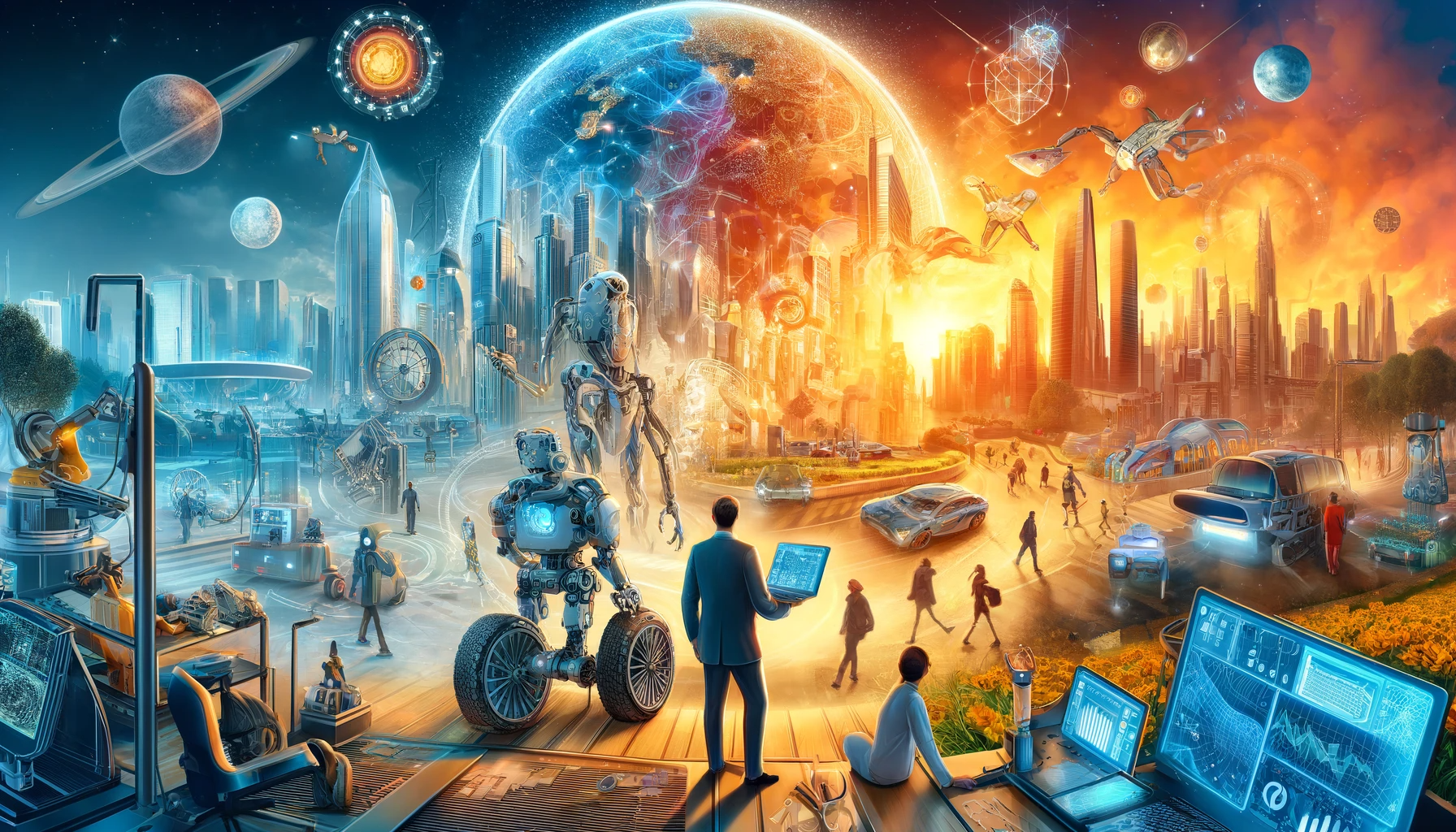In the grand, messy, and thrilling saga that is the evolution of technology, we’re currently riding the wave of a robotics and AI revolution that’s as exhilarating as it is anxiety-inducing. It’s like watching your favorite high-stakes poker game; the stakes are monumental, the players are genius, and the outcome could swing in any direction.
Imagine, for a moment, the world of tomorrow. Not the shiny, utopian kind you see in glossy tech brochures, but a real, lived-in world where AI and robotics have seeped into the cracks of our daily lives. We’re talking about self-driving cars that navigate the chaotic ballet of city traffic, robots that could be mistaken for gardeners tending to our crops, and tiny robotic surgeons performing feats inside the human body that today’s best human hands couldn’t manage.
The thought alone is enough to spark a wildfire of excitement. Self-driving cars, as we’ve seen, are no longer the stuff of science fiction; they’re here, navigating our streets, promising a future with fewer accidents and, let’s be honest, a much-needed break for those of us who can’t parallel park to save our lives. And let’s not even start on the vacuum-cleaning robots that have become the unsung heroes of our living rooms, banishing dust bunnies without a complaint.
But as with any seismic shift, there’s a flip side. While robots take on the dirty work, from cleaning our oceans to harvesting our fields, there’s the gnawing question of what this means for the rest of us. How do we fit into a world where our jobs, our skills, and maybe even our purpose are up for grabs by entities that don’t sleep, don’t eat, and don’t ask for a raise?
And then there’s Apple, rumored to be dipping its toes into the robotics pool. If true, what does it mean when a behemoth known for its sleek designs and tightly controlled ecosystems decides to play in the robotics sandbox? Will they redefine the game, or will they, like others before them, stumble in translating ambition into tangible impact?
Now, sprinkle into this already bubbling pot the advent of microrobots in medicine—tiny, intelligent machines designed to dive into the human body and fix us from the inside out. The potential is staggering, offering a glimpse into a future where diseases are defeated not by brute-force interventions but by precise, targeted actions that seem straight out of a sci-fi novel.
Yet, with all these advancements, there’s a shadow that trails closely behind. The divide between those who have and those who don’t could yawn wider than ever. As robotics and AI push forward, bringing with them the promise of longer lives and unprecedented prosperity, they also pose hard questions about the nature of work, the structure of society, and the essence of what it means to be human in a world where many of our traditional roles are increasingly obsolete.
This revolution is not just about the cool gadgets and miraculous interventions it brings into our lives; it’s also about the profound shifts it demands from us as a society. How we respond to these challenges, how we ensure that the benefits of robotics and AI are shared widely, and how we navigate the ethical minefields they present, will likely define this era.
In the end, the robotics and AI wave is a testament to human ingenuity and ambition, a mirror reflecting our brightest hopes and our deepest fears. As we stand on the brink of this new world, it’s clear that what lies ahead is not just a journey of technological advancement but a test of our collective character. Will we ride this wave with grace, ensuring it lifts all boats, or will we allow it to crash over us, leaving behind a more divided world?
The answers to these questions are still unwritten, hanging in the balance as we forge ahead. What’s certain, though, is that the future is coming at us fast—brimming with potential, fraught with peril, and undeniably exciting. Buckle up; it’s going to be a wild ride.

